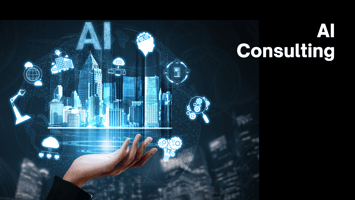In the digital era, where efficiency and seamless integration are paramount, BINDMYIT is leading...
Future of AI in Customer Service: A Guide for Preparedness
At BINDMYIT, our extensive observation of the AI landscape reveals a complex picture: articles, insights, lawsuits, and comments highlight both the promise and pitfalls of artificial intelligence in the business domain. A recurring theme is companies' failure to harness AI effectively, often stemming from a lack of preparation and readiness. As we look toward 2030, integrating AI into customer service presents a significant opportunity for innovation and enhancement, but only if approached with a comprehensive and strategic plan.
The Path to Success
1. Advancing AI Technology: The first step involves refining AI technologies to understand customer nuances better. This will improve responsiveness and enable more personalized service. This effort must align with the company's core values, ensuring that AI applications respect and enhance the brand's ethos.
2. Ethical AI Training: Ethical considerations and using diverse, clean datasets in AI training are essential. These measures ensure that AI systems can handle complex interactions effectively while adhering to privacy, fairness, and organizational policy standards.
3. Collaborative Learning Ecosystems: It is crucial to create ecosystems where AI tools and customer service representatives can learn from each other. This symbiosis fosters an environment of continuous improvement and adaptation, keeping both technology and human skills sharp and relevant.
4. Skilled Feedback and Auditing: Employees and stakeholders must be equipped with the necessary skills to provide feedback, perform audits, and make precise adjustments to AI models. This ongoing engagement ensures that AI systems align with company values and policies.
5. Enhanced Collaboration: The collaboration between human agents and AI must be optimized to deliver customer experiences that reflect the company’s messaging and values. This partnership is pivotal in leveraging the strengths of both humans and machines.
6. Transparency and Trust: Openly demonstrating the capabilities and ethical applications of AI is fundamental to building trust. This transparency ensures compliance with policies and procedures, establishing AI as a reliable and integral part of the service framework.
7. Data Accuracy and Cleanliness: The operation of AI systems with accurate and relevant information is non-negotiable. High-quality data reduces errors and ensures decisions are made in compliance with company policies.
8. Clear and Consistent Messaging: Crafting and refining customer messaging to ensure clarity and consistency with the company’s objectives is essential. This step guarantees that all communications are strategically aligned and effectively delivered.
9. Robust Testing Mechanisms: It is critical to implement comprehensive testing mechanisms to verify that AI-driven interactions and messaging meet strategic goals. Engaging test groups for feedback ensures that the strategy’s delivery matches organizational standards and customer expectations.
10. Intellectual Property Protection: Protecting AI and data assets through rigorous security structures is vital to safeguard against infringement and unauthorized access. This protection extends to all aspects of AI deployment.
11. Quantum-Safe Security: Future-proofing the platform’s security architecture against emerging threats, such as quantum computing, is essential for safeguarding sensitive data and intellectual property over the long term.
Conclusion
The journey toward AI-enhanced customer service by 2030 is fraught with challenges but ripe with opportunity. Organizations can overcome the pitfalls that have beset early adopters by adhering to a meticulously planned strategy that emphasizes ethical AI use, continuous learning, and robust security. BINDMYIT believes that with the right preparation, integrating AI into customer service can significantly enhance efficiency, personalization, and customer satisfaction. The future is bright for those ready to embrace these changes with foresight and strategic planning. We can help.




